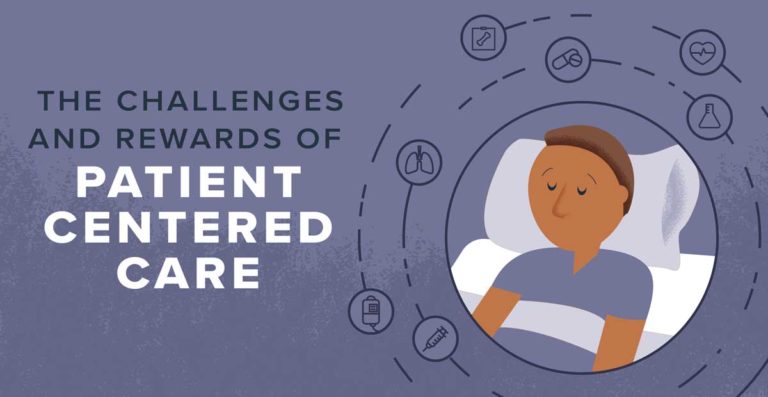Many hospitals and other healthcare facilities are pushing for more patient-centered care throughout their operations. Patient-centered care or PCC is a term that’s used to describe care in which the patient’s needs come first. It may sound pretty straightforward or generic, but in reality, creating a uniform definition of patient-centered care is one of the biggest obstacles to implementing these procedures. When care is administered across a wide variety of departments & procedures, defining patient-centered care can be extremely challenging. Focusing on the patient’s needs can lead to greater job satisfaction and a greater sense of purpose among healthcare employees. Learn more about the challenges and rewards of implementing PCC.
Implementing Patient-Centered Care Across Disparate Departments and Services
Hospitals and their staff are typically tasked with administering all kinds of services, from hospice and end-of-life care to routine physicals, cancer treatment, and complex medical procedures. With so many different procedures to keep track of, implementing PCC across all these departments and services can be difficult. Many departments and clinics will adopt their own definition of PCC, which can lead to confusion and miscommunication when nurses and other staff members work in different departments simultaneously.
Finding a Universal Definition
Developing a general procedure or policy behind PCC must come from the top, or the company that owns or manages the healthcare facility. With the rise of corporate mergers in the healthcare industry, companies are absorbing more individual clinics and hospitals than in years past. This concentration of care can make implementing PCC even more challenging. The company will need to come up with a clearly defined approach to PCC and implement it across potentially hundreds or thousands of facilities.
Despite these challenges, defining PCC usually comes down to focusing on the patient’s needs. Regardless of how the staff administers care, PCC is all about making the patient feel that their needs are met and that they have had a positive experience when receiving care. With so many departments and procedures, healthcare providers can provide PCC if they can:
- Listen to the patient
- Address the patient’s concerns
- Improve their condition
- Exercise grace and compassion when treating the patient
But focusing on these priorities while also factoring in complex medical data can lead to competing agendas, in which the doctor wants to treat the patient one way, while the nurse or patient wants to take a different course.
How Nurses Affect Patient-Centered Care
Studies show that a patient’s perception of their quality of care usually comes down to their experiences with the nursing staff. Nurses typically spend more time with the patient than anyone else at the facility. They are the ones providing bedside services to the patient, comforting them during times of stress, and explaining complex medical services to the patient. If a facility wants to administer PCC, the nursing staff will need to play an outsized role. Many facilities are pushing their nursing staff to administer PCC with as much enthusiasm as possible. While nurses shouldn’t be solely responsible for administering PCC, every decision the nurse makes should be focused on the patient’s needs and concerns.
If a facility is successful at adopting PCC, it can lead to more job satisfaction among healthcare employees. Seeing a patient get better and enjoy a positive experience at the hospital can improve employee morale. Facilities with a long history of providing PCC can expect to see better employee retention rates, more demand for their healthcare services, and a reputation of delivering quality care in the community.
While PCC can be difficult to implement and define, it’s best to make the patient feel as comfortable as possible. Nurses play a large role when it comes to administering PCC. To better deliver PCC, the hospital staff should try to come up with a mutually-agreed upon approach to delivering this type of care.
